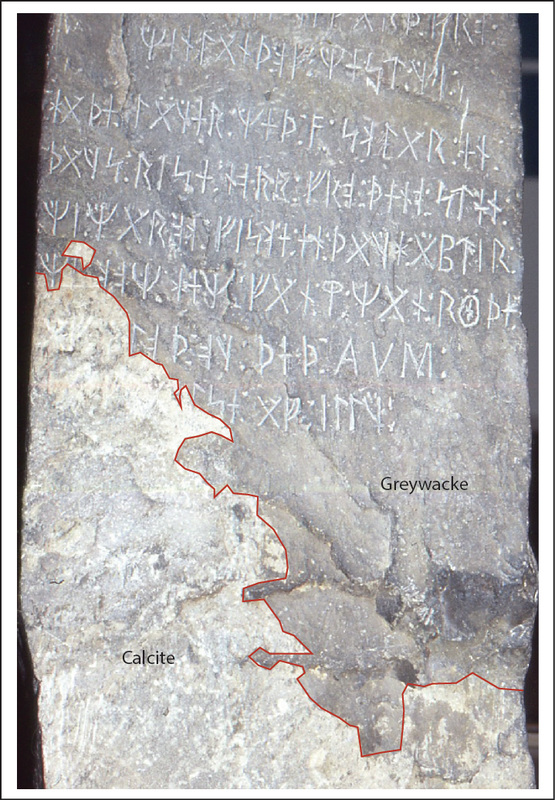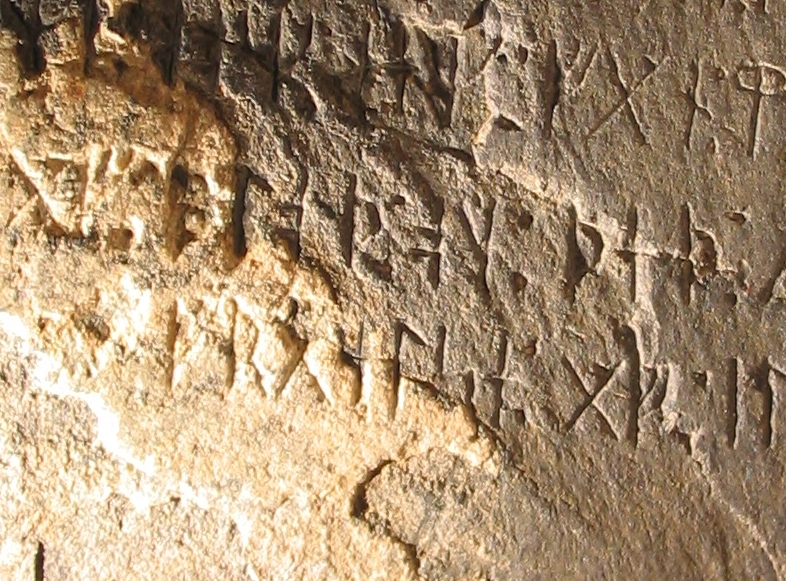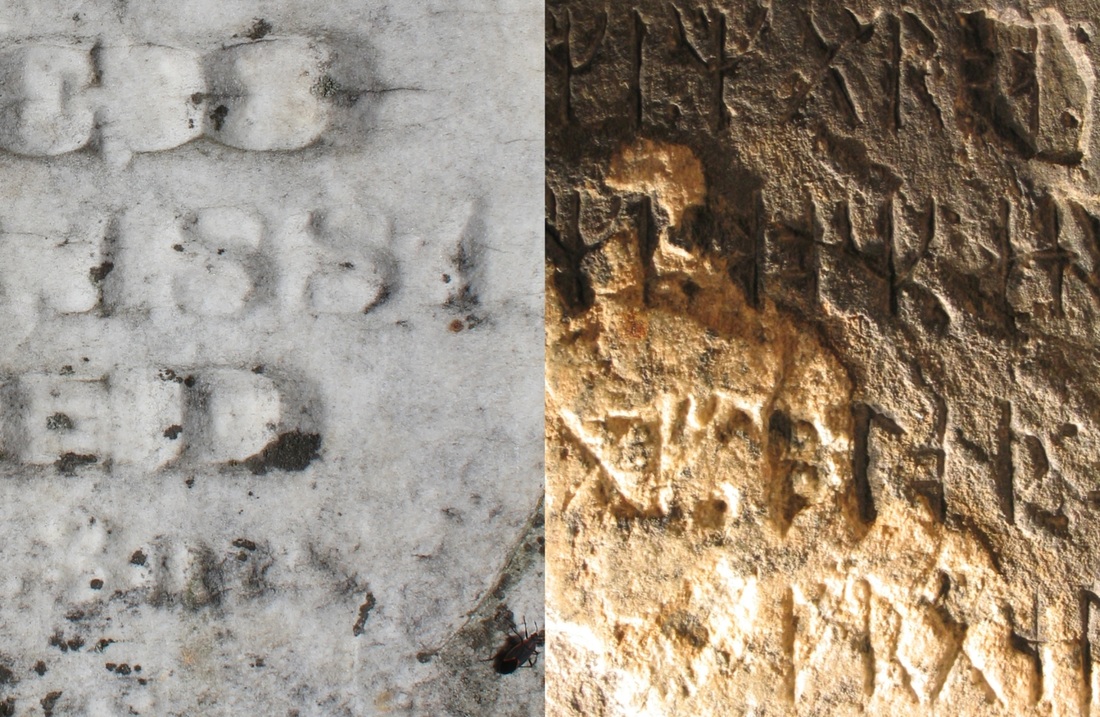Rather than let things remain unwritten, I'm going to try a "lightning round" approach where I quickly summarize an idea: short and (hopefully) to the point. These posts won't be works of art, but will (1) provide a place for discussion for those who are interested in a topic and (2) provide an organized summary that I can return to. So don't beat me up if I leave something out or fail to appreciate some nuance: it is what it is.
Now onto the topic.
Harold Edwards, a professional geologist and scheduled Forbidden Archaeology participant, sent me some information on the weathering of calcite as it relates to evaluating the age of the inscription on the Kensington Rune Stone (KRS). Edwards told me that I could "use these pictures and this information as you wish." I'll quote Edwards directly when so you'll know which words are his and which are mine.
First, some definitions:
Calcite is a common carbonate mineral that is one of the principal constituents of limestone and marble. It has a Mohs hardness of 3 and dissolves in acid.
Greywacke is a variety of sandstone. Sandstone has a Mohs hardness of 6.5 to 7. The susceptibility of sandstones to acid depends upon the minerals holding the sand grains together.
The different hardness and weathering properties of calcite and greywacke are important to evaluating the age of the inscription on the KRS. I have modified an image of the KRS (taken in 1995 and sent to me by Edwards) to show the location of the calcite deposit on the front face of the KRS. According to Richard Nielson and Scott Wolter (The Kensington Rune Stone: Compelling New Evidence, 2006, p. 17), the calcite layer is 1-2 mm thick and was deposited millions of years ago "along the joint fracture system [while the rock was still attached to its parent] in solution, parallel to the face side of the stone." (In his email, Edwards stated that the calcite layer was about 3 mm thick).
"Microscopic examination using reflected light revealed that the characters carved into the calcite were less distinct and appeared to be more weathered than the characters carved into the graywacke. . . . Further study of the weathering of the characters within the calcite area might yield additional information about the relative age of the inscription, but currently the only tests available are invasive and would deface the inscription."
In his email, Edwards claims that the portion of the inscription in the calcite is much less weathered than one would expect had the carved runes actually been exposed to 500 years of weathering:
"The inscription is about as sharp as the day it was carved. Look at the word spacer--the colon-like double dotted letter. There is an almost perfect impression of a conical punch. The surface of the calcite layer shows the granular texture that is typical of weathered calcite so it was weathered for some time. The letters are smooth showing virtually no weathering."
"Marble is almost completely made of calcite. Rainwater absorbs carbon dioxide from the air to become slightly acidic and over time dissolves away the calcite. In the Kensington area this happens to marble tombstones at a rate of 6mm/1000 years. In other words in the 500 years between 1362 and 1898 the calcite layer would have been obliterated."





 RSS Feed
RSS Feed
